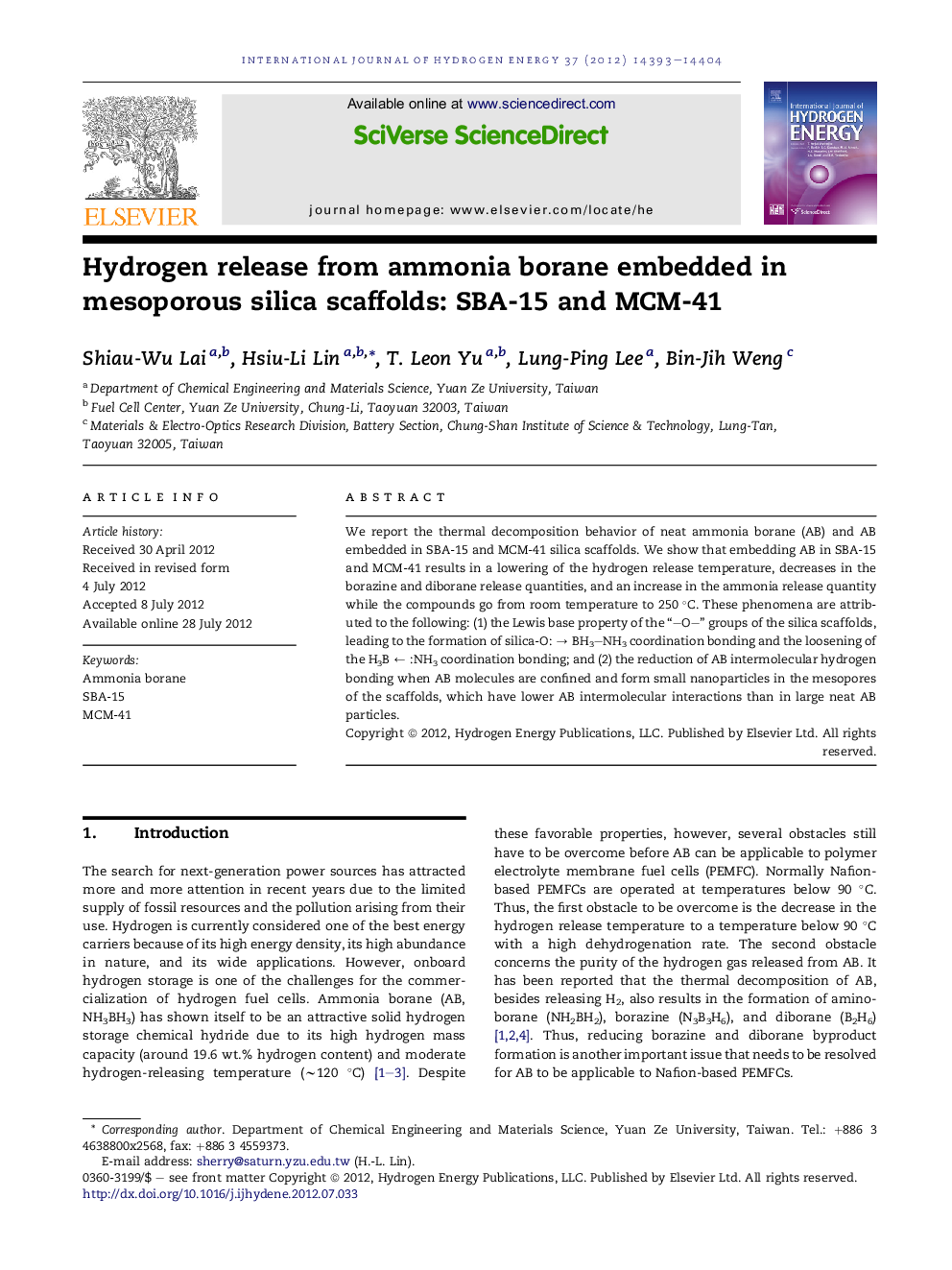| Article ID | Journal | Published Year | Pages | File Type |
|---|---|---|---|---|
| 1274787 | International Journal of Hydrogen Energy | 2012 | 12 Pages |
We report the thermal decomposition behavior of neat ammonia borane (AB) and AB embedded in SBA-15 and MCM-41 silica scaffolds. We show that embedding AB in SBA-15 and MCM-41 results in a lowering of the hydrogen release temperature, decreases in the borazine and diborane release quantities, and an increase in the ammonia release quantity while the compounds go from room temperature to 250 °C. These phenomena are attributed to the following: (1) the Lewis base property of the “–O–” groups of the silica scaffolds, leading to the formation of silica-O: → BH3–NH3 coordination bonding and the loosening of the H3B ← :NH3 coordination bonding; and (2) the reduction of AB intermolecular hydrogen bonding when AB molecules are confined and form small nanoparticles in the mesopores of the scaffolds, which have lower AB intermolecular interactions than in large neat AB particles.
► NH3BH3 (AB) was embedded in SBA-15 & MCM-41. ► They cause a lowering of H2-releasing temperature. ► The “–O–” in SBA-15 & MCM-41 form coordination with BH3. ► It reduce the intermolecular hydrogen bonding of AB.
